We all like playing games – be it something as relaxing as Candy Crush, as thrilling as The Last of Us, or as competitive (in a friendly way) as Wordle. Playing games is a way to relax and unwind. However, it is also a booming industry with many opportunities and potential for growth.
India’s gaming market is currently at $2.6 billion and is expected to reach $8.6 billion by 2027. The esports segment especially cannot be ignored regarding gaming online. While the industry is relatively new, it has already proved itself in popularity, reach, and earning potential. All these factors, spurred on by an increasingly tech-savvy and digital-first millennial and Gen-Z customer base, have propelled the gaming industry to new heights.
A recent study found that an average user spends less than Rs 100 per day and less than an hour per day on gaming. While some may see this as bad news, for a savvy entrepreneur, this indicates untapped potential. Increasing user engagement is the key to unlocking success in the industry. Loyalty programs and referral marketing are proven ways to increase user engagement in gaming.
In this post, we shall explore the elements of a successful loyalty program and referral marketing campaign in the gaming industry and learn the best ways to implement them.
The Power of Loyalty Programs and Referral Marketing in Gaming
A loyalty program is a well-defined system that rewards players for their engagement and investment in a game. Harnessing players’ innate desire for achievement and recognition and cultivating a sense of belonging and connection to the game’s community, these programs create a win-win that benefits both the player and the company.
For example, RuneScape’s Membership Loyalty Programme rewards players with loyalty points as an additional reward for maintaining their subscriptions. These points can be used on tips, including exclusive cosmetic items, emotes, and other in-game content. These points accrue more quickly the longer the duration of the player’s membership. This creates an ongoing incentive for subscription and player retention.
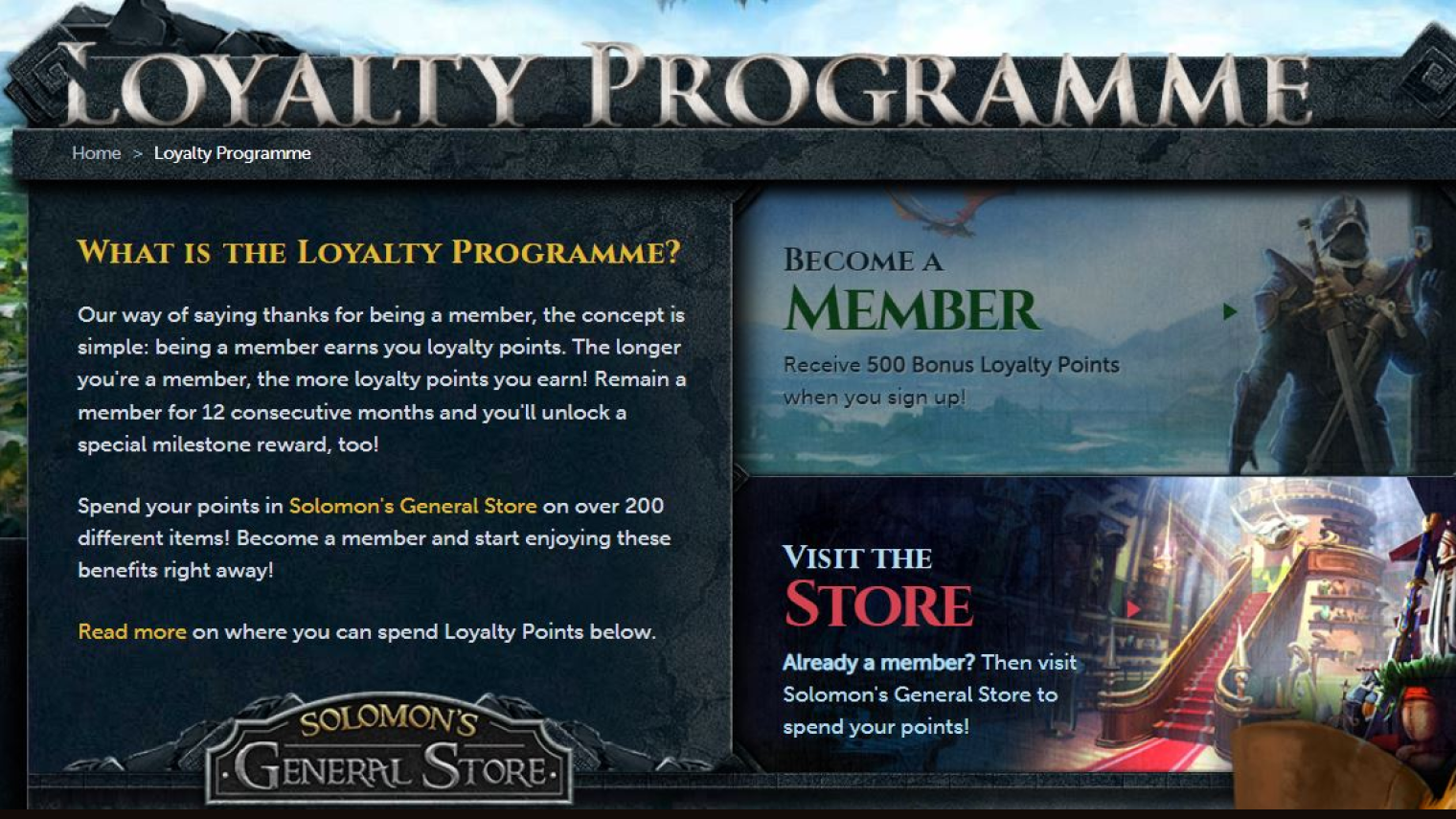
A well-executed loyalty program improves player retention by reducing churn rates and establishing a tangible reason for players to keep returning. It also increases monetization opportunities, as engaged players spend money on in-game purchases.
A less obvious but precious advantage is that loyalty programs enable data gathering about player behavior, preferences, and engagement patterns. Brands can use these obtained data to refine the gaming experience further.
Most importantly, however, loyalty programs encourage referral/word-of-mouth marketing. Loyalty programs nurture a sense of camaraderie among players, motivating them to interact and collaborate within the game’s ecosystem. A great example of this is the League of Legends Honor System, which is not a traditional loyalty program but rewards players who positively influence the gaming experience of their co-players. Players receive rewards like Honor Orbs or loading screen flairs for consistently displaying good sportsmanship and teamwork. This encourages a positive community and can lead to increased player retention.
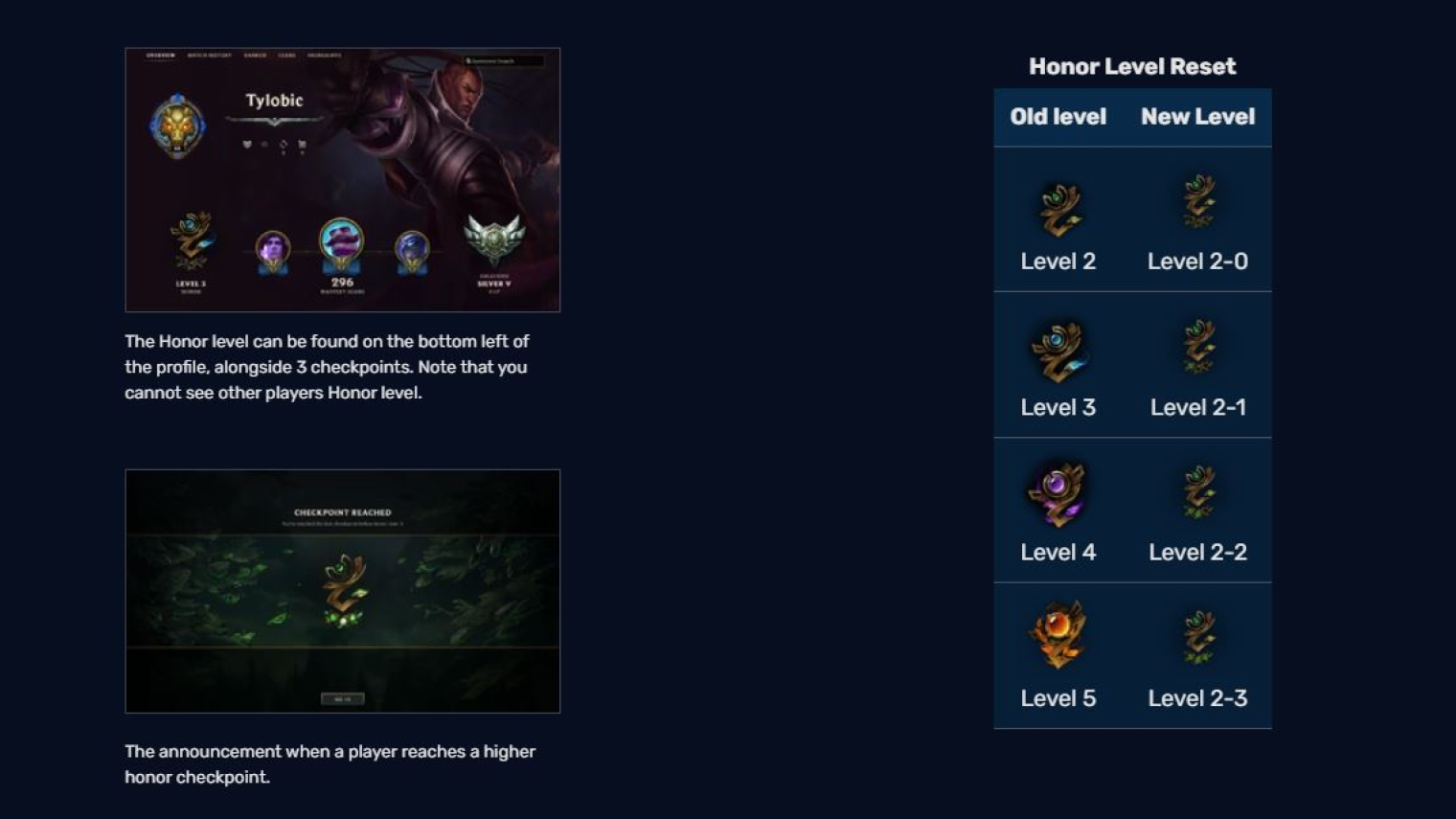
The sense of companionship often translates into real-world connections, too, as people invite their friends, family members, and other online communities that they may be part of to interact with them within the game, driving organic growth.
A great example of how effective referral marketing can be is Wordle. A simple word game created by a man to entertain his girlfriend that began with 90 users, grew to have millions of users, and was eventually bought by the New York Times. This popularity was earned organically by encouraging users to share their daily results on their social media feeds. This created a sense of curiosity and friendly competition, making the game a huge success.
Another example is Fortnite’s ‘Refer a Friend’ program. Players could send invitations to friends, and the referrer and the referred friend received in-game rewards. This event helped retain existing players and brought new players into the game, contributing to Fortnite’s immense success.
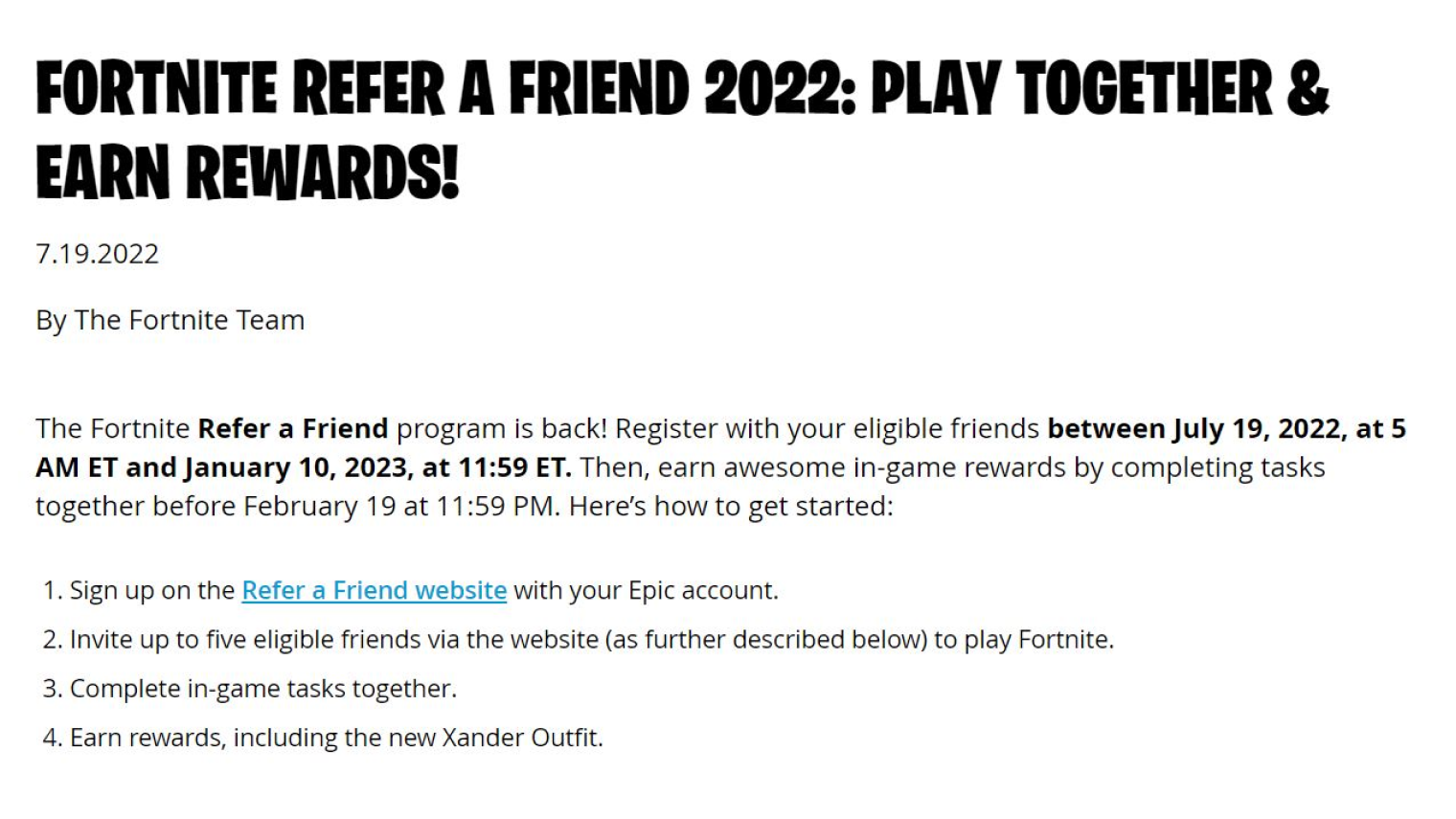
Thus, implementing a loyalty program can be a great way to engage and retain your players while attracting new ones. Referral marketing can also be effective if implemented correctly.
Here’s a detailed step-by-step guide on how to set up and manage a loyalty program and referral marketing in the gaming industry:
Step #1: Research and Planning
Research and planning are the first steps to implementing an effective loyalty program. Start by understanding what worked for successful loyalty programs in the gaming industry. Understanding your target player base and what motivates them is also essential. This research lets you determine how the program aligns with your game’s mechanics and player base.
Step #2: Define Your Objectives
The next step involves clearly defining your goals for the loyalty program and referral marketing. Are you aiming to increase player retention monetization, drive community building, attract new players, or all of these? The kind of program you implement will differ depending on these goals. If you understand your objectives, you can design a program that aligns with your goals. In addition, defining measurable goals right at the beginning helps to track the program’s success.
Step #3: Design the Loyalty Program
To be successful, a loyalty program should be structured to offer rewards and incentives to players based on their engagement and spending. Some loyalty program elements include:
- Points system that assigns points for in-game purchases, achievements, time spent playing, and more.
- A tiered reward system (e.g., bronze, silver, gold) that allows players to unlock increasingly valuable, desirable, and exclusive rewards, accessible only through the loyalty program, as they progress through the game. Rewards include in-game items, exclusive content, discounts, early access, or real-world merchandise.
- A virtual currency system that players can earn and use only within the loyalty program.
- Engaging and diverse challenges on a weekly or monthly basis that caters to differing player preferences and encourages them to complete specific tasks for rewards.
- Limited-time offers and exclusive rewards tied to these challenges can create a sense of urgency and excitement.
- Personalized rewards based on players’ preferences and gameplay styles.
- In-game notifications, social media posts, email newsletters, and community forums provide accurate and updated information to players about the program.
- Progress tracking tools, such as progress bars, levels, or milestones, provide players with a clear overview of their progress within the loyalty program.
- A feedback loop system that encourages players to provide feedback on the loyalty program. Their insights can be used to refine the program and make it more appealing.
- Social integration lets players share their loyalty program achievements on social media platforms.
An iconic example of a successful loyalty program in the gaming industry is Fortnite’s Battle Pass. This tiered system uses exclusive in-game items, cosmetics, and virtual currency as incentives to engage players as they complete challenges and level up. In addition, The Battle Pass is updated regularly with new content, ensuring sustained engagement. Thus, Fortnite’s loyalty program drives revenue and furthers the game’s cultural influence and flourishing sense of community. This, in turn, encourages referral marketing.
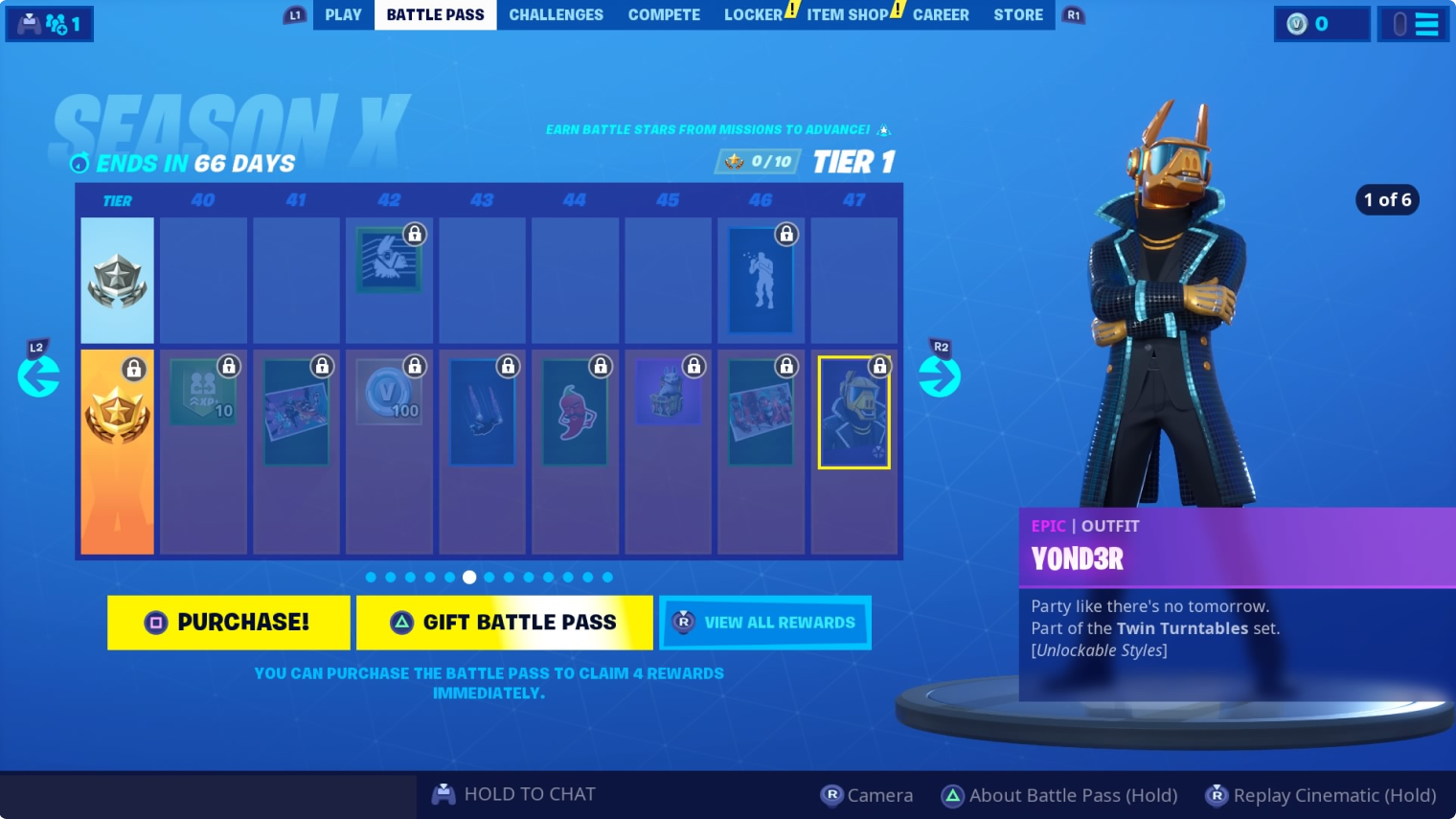
Step #4: Implement Referral Marketing
Referral marketing, also known as word-of-mouth marketing, leverages the power of existing players to attract new users. This strategy depends on and capitalizes on players’ trust in their friends’ recommendations. Thus, it becomes a cost-effective acquisition strategy. In addition, referral marketing allows games to more accurately target potential players more likely to be interested in the game’s genre or mechanics, increasing the chances of conveyrsion. This creates a symbiotic relationship between players and game providers. Given the highly collective and community-based nature, the gaming industry is particularly compatible with referral marketing.
Here are a few critical components of an effective referral marketing system:
- A simple and intuitive referral process.
- Attractive incentives for the referrer and the referred player include in-game currency, exclusive items, skins, early access to content, etc.
- Personalized/ unique referral codes that existing players can share with their friends. Such personalization creates a sense of ownership and individuality.
- Integration with social media platforms enables players to share referral links with their networks quickly.
- Limited-time offers that create anticipation and encourage players to take prompt action. Similarly, community events that entice players to invite friends to join and offer special rewards to those who refer the newest players can also add a competitive element that motivates players to refer more friends.
- Gamification elements, such as progress bars, milestones, and achievements, engage players and make the referral experience more enjoyable.
A successful referral marketing campaign example is World of Warcraft’s Recruit-A-Friend Program. Players who referred friends to join WoW received goodies such as unique mounts, pets, and other rewards, including free game tokens, as their referred friends progressed in the game. This initiative incentivized player referrals and encouraged players to team up and play together, increasing camaraderie.
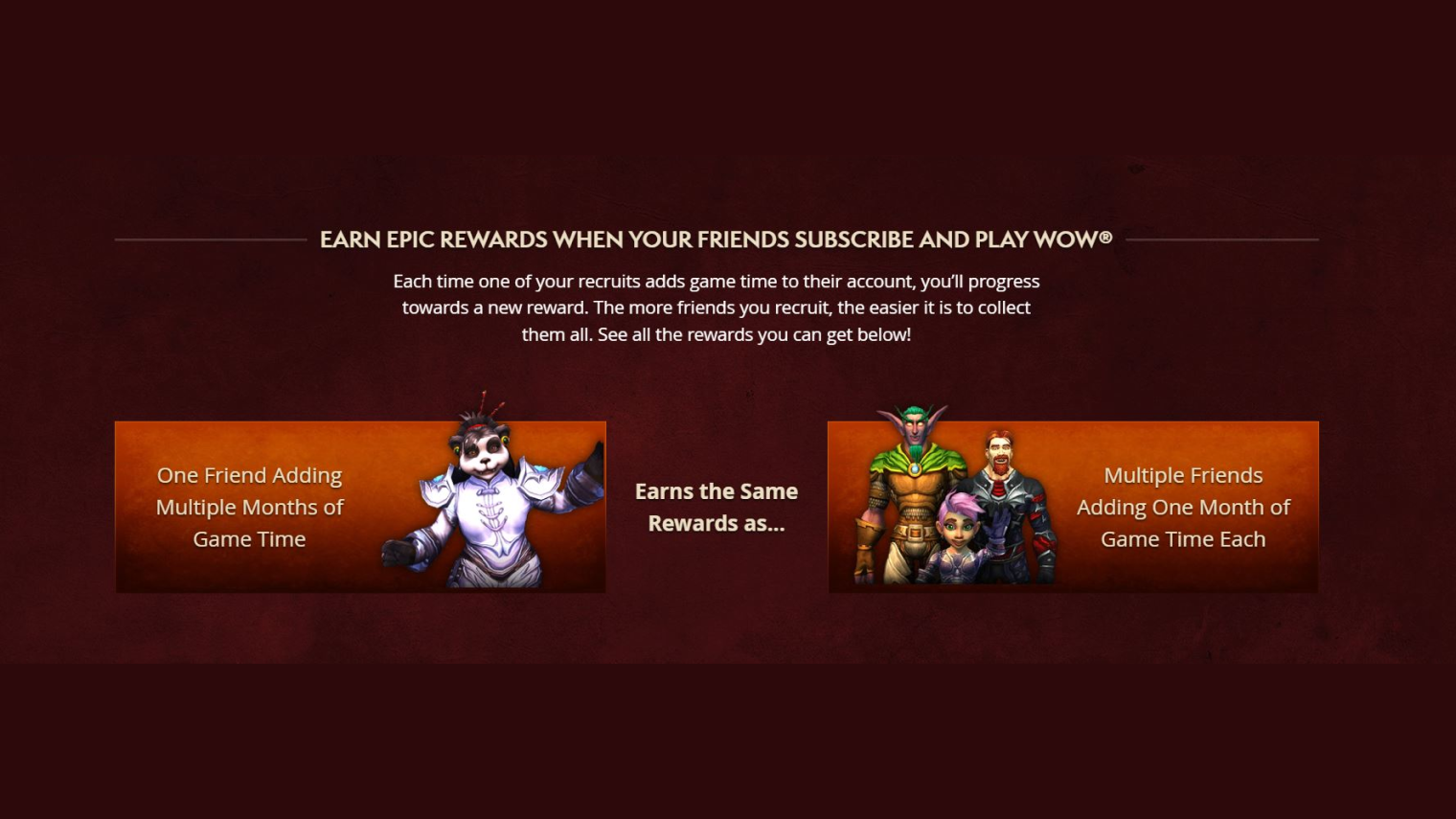
Step #5: Choose Technology
The software or platform you select to manage your loyalty program and referral marketing efforts is central to the success of these efforts. These tools can help you track player activity, manage points, automate reward distribution, etc.
Adda52, India’s No.1 Poker Site, adopted WebEngage’s retention operating system to enhance the online gaming experience for players. The Customer Success team at WebEngage collaborated with the teams at Adda52 to get an in-depth understanding of the player lifecycle, the goal, and the challenges. Both teams then devised a scalable solution of crediting bonuses to the players’ accounts using the Call an API functionality on the WebEngage dashboard. After a successful API call, Adda52 uses a multi-channel communication approach to notify the players that bonuses have successfully been credited to their respective accounts. As a result, more than 15% of total players started playing cash games using bonuses.
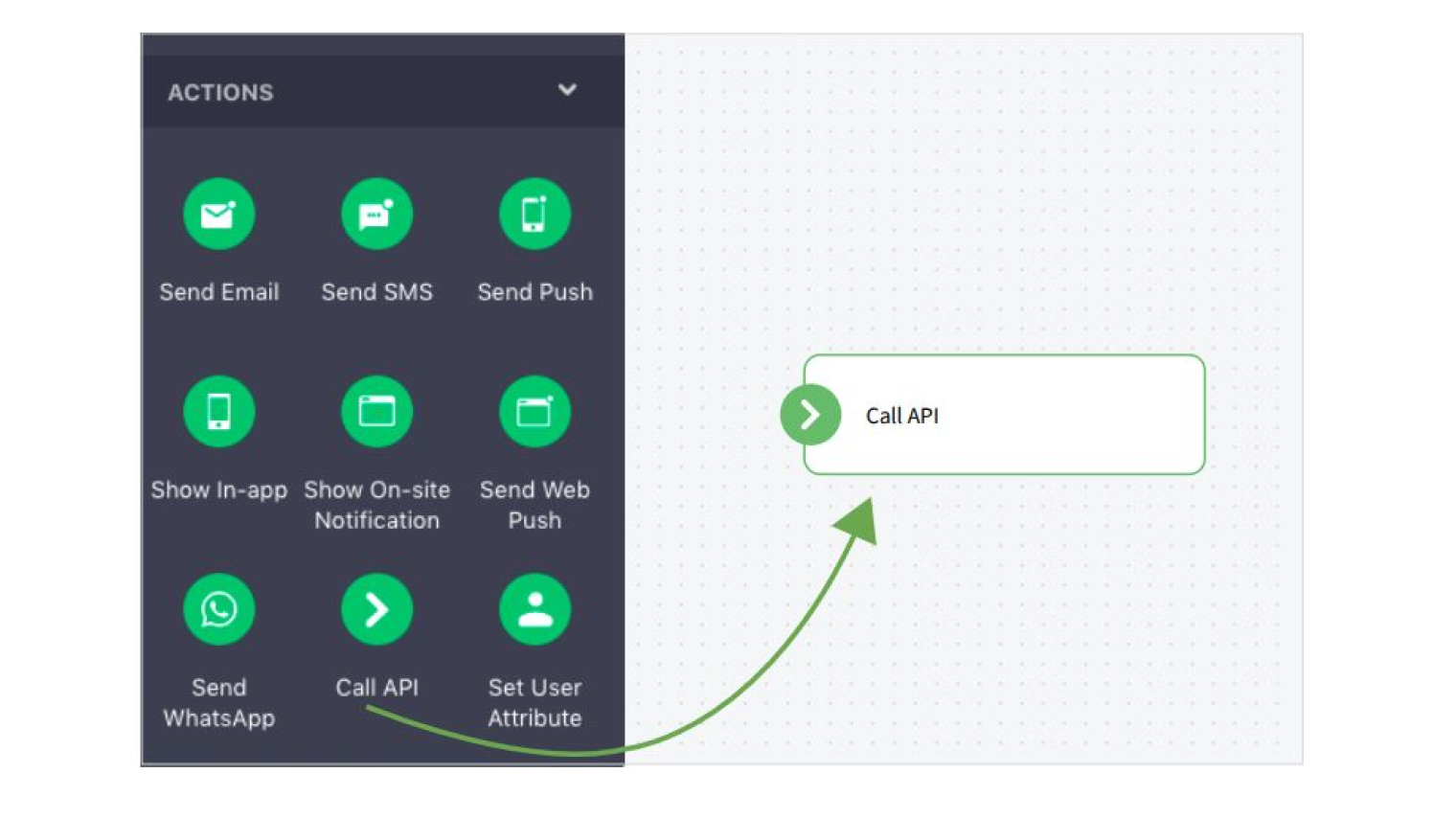
Step #6: Promote the Program
A necessary step in the process is to spread the word about your loyalty program and referral program through various communication channels, such as in-game notifications, emails, social media, etc. Clearly explaining the benefits and how players can participate is crucial to the success of these programs.
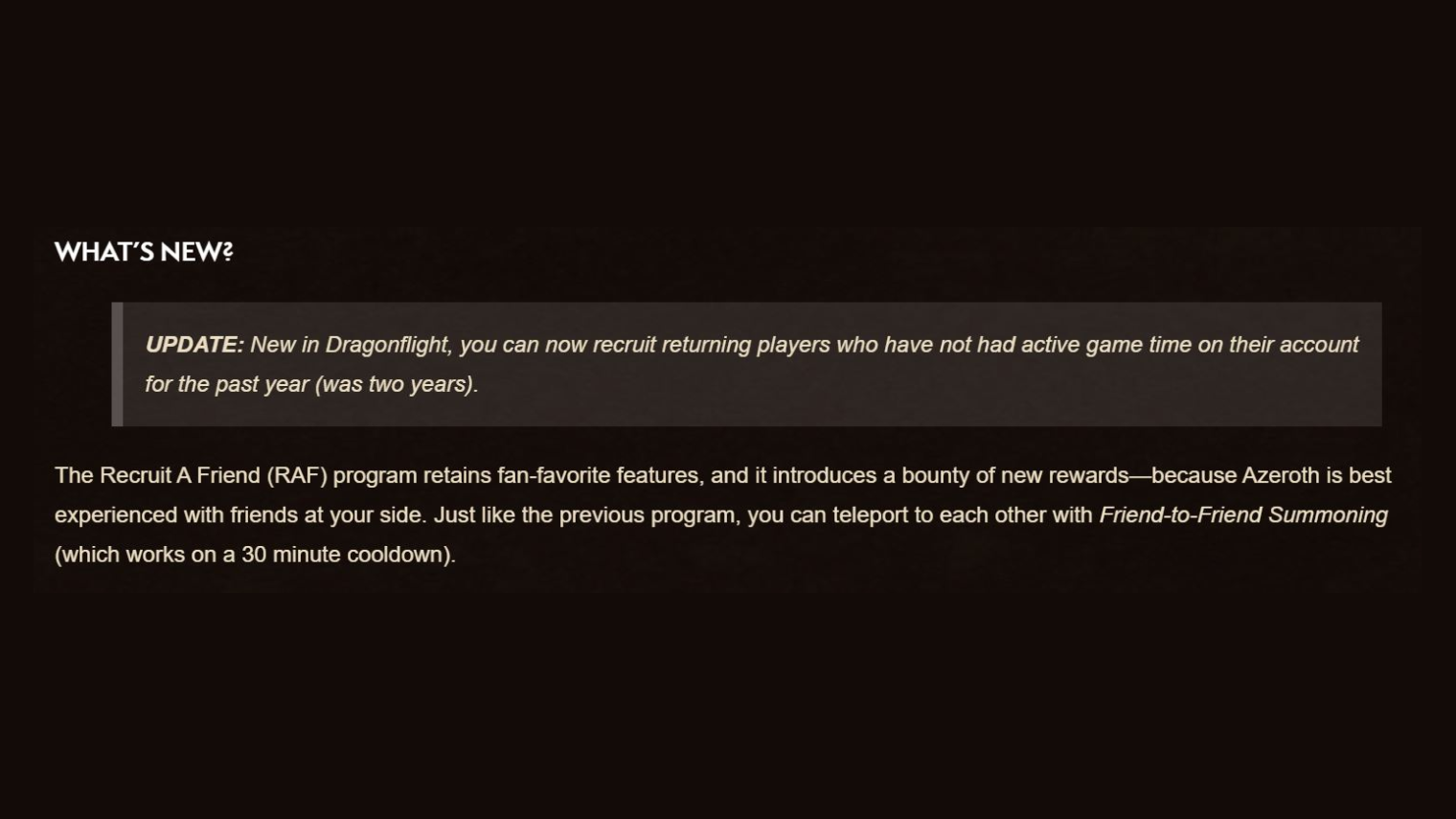
Step #7: Monitor, Analyze and Optimize
Regularly monitoring the performance of your loyalty program and referral marketing efforts is essential. As mentioned, loyalty programs enable developers to gather much data about player behavior and engagement levels. Analyzing this data to see which rewards and incentives are most effective and which channels drive the most referrals can give various insights. These insights can enhance the gaming experience or plan marketing and communication strategies. This, in turn, can drive conversion and player retention.
Adda52, for example, used RFM analysis on the WebEngage dashboard to identify first-time depositors in the active cash game segment. They used the results of this analysis to nudge them across channels to make subsequent deposits and play more cash games on the Adda52 app/website. The result was that 85% of players played repeat cash games.
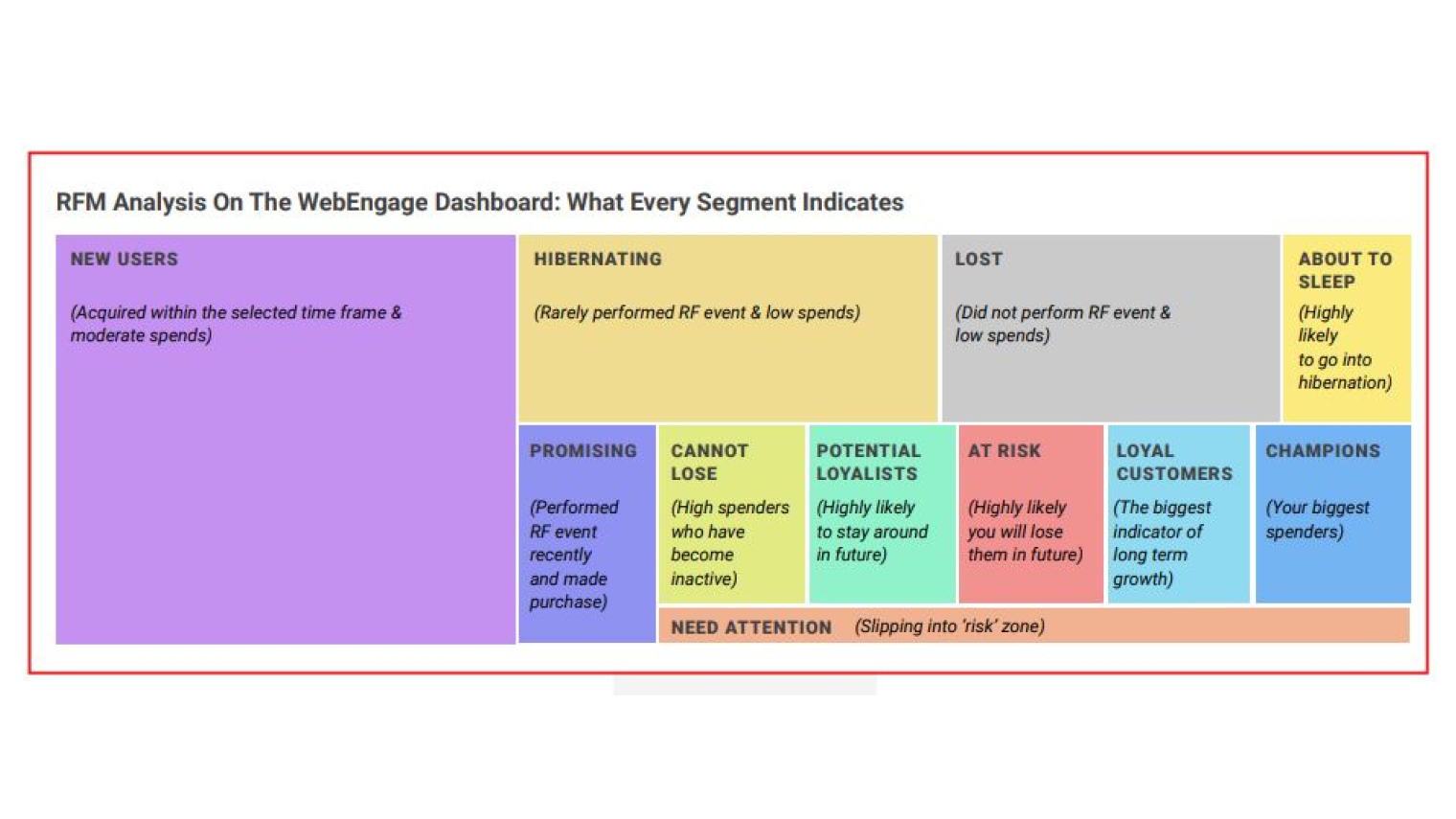
Step #8: Engage and Communicate
Maintaining regular communication with your players about their progress in the loyalty program and reminding them of the rewards they can earn is a great way to keep players engaged. Interacting with players through social media, in-game events, and newsletters to keep them excited and motivated can make a real difference. The more personalized the communication, the more effective it is for players.
For ZenGaming, using contextual onsite notifications and emails to keep players engaged paid off. With the help of WebEngage’s Journey Designer, automated workflows were established that triggered communication to the player at critical points during the user journey. The result was an increase in their Day One retention rate from 77.3% to 97.1%.
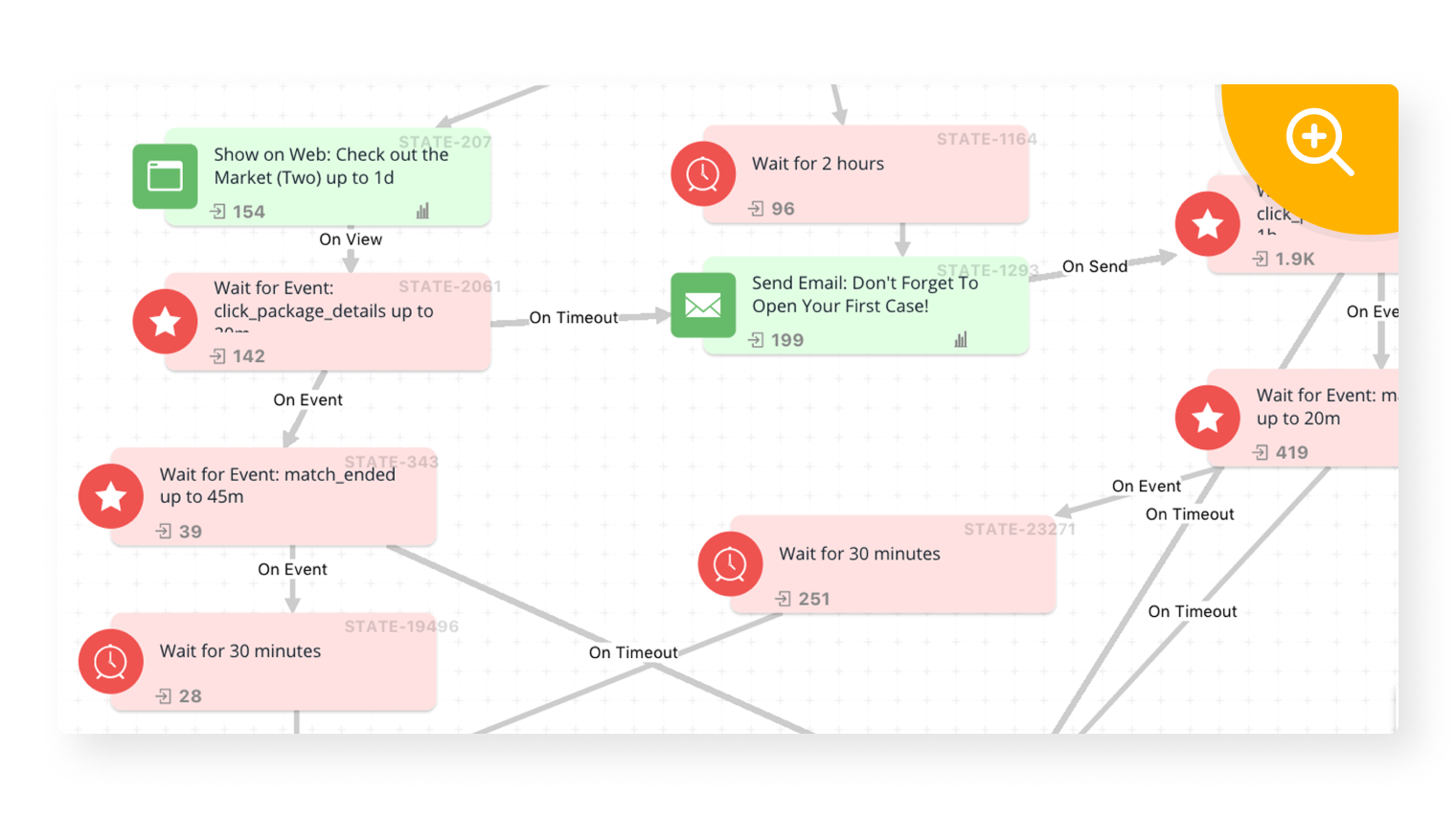
Step #9: Measure ROI
Metrics such as player engagement, average spending, referral conversion rates, etc., can be used to calculate the return on investment (ROI) of your loyalty program and referral marketing. This data can then be analyzed and used to develop strategies for increasing the effectiveness of these programs or for course-correcting if necessary.
Funnel analysis, especially Bottom of The Funnel metrics, is a powerful tool for measuring ROI.
Step #10: Stay Compliant
The most important step is ensuring that your loyalty program and referral marketing efforts comply with relevant regulations, including data privacy and consumer protection laws. Doing so increases the credibility of these programs and the players’ trust in them.
Conclusion to referral marketing for your gaming business
Through strategic planning, careful design, and continuous nurturing, the creation of loyalty programs and referral marketing programs can benefit players and strengthen the longevity and success of your games in an increasingly competitive landscape. The effectiveness of your loyalty programs and referral marketing can vary based on your target audience, the quality of your rewards, and the overall gaming experience. Gathering feedback from players can help you refine and gain the competitive edge they can give you.

A technology partner who understands the industry can provide the tools and analytics you need to increase user engagement and grow your share in the gaming industry revenue pie. WebEngage has a track record of delivering gaming brands like yours with effective and sustainable solutions that are easy to implement. Read our Impact Stories™ and request a demo to understand how we can help you.





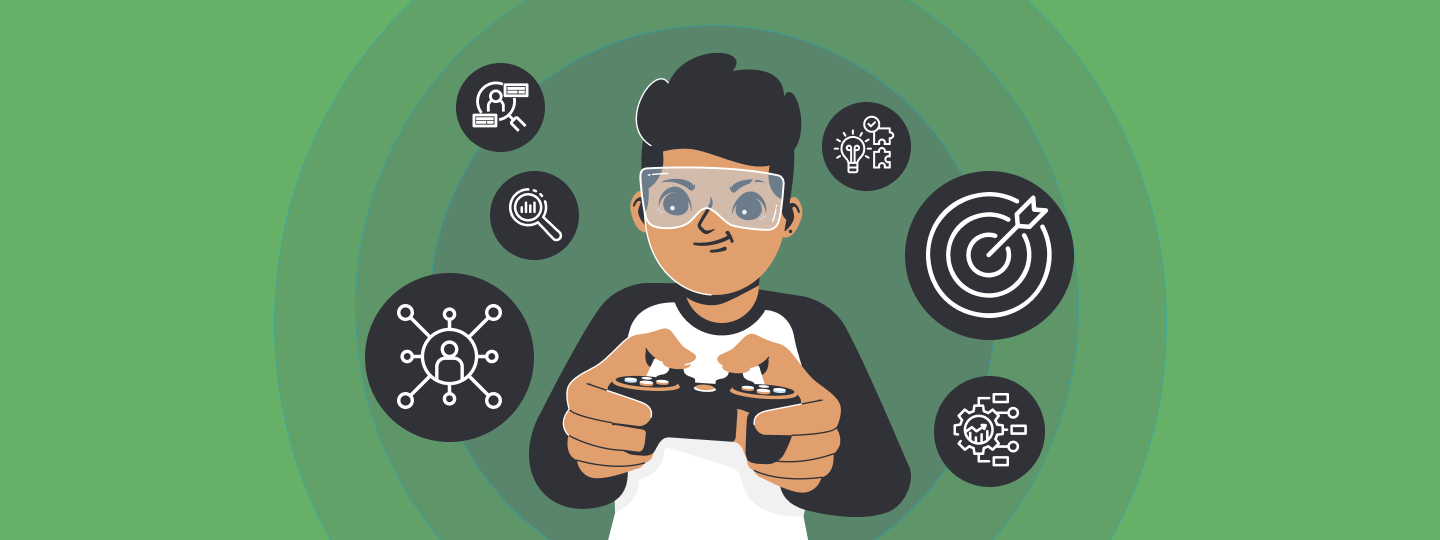


 Harshita Lal
Harshita Lal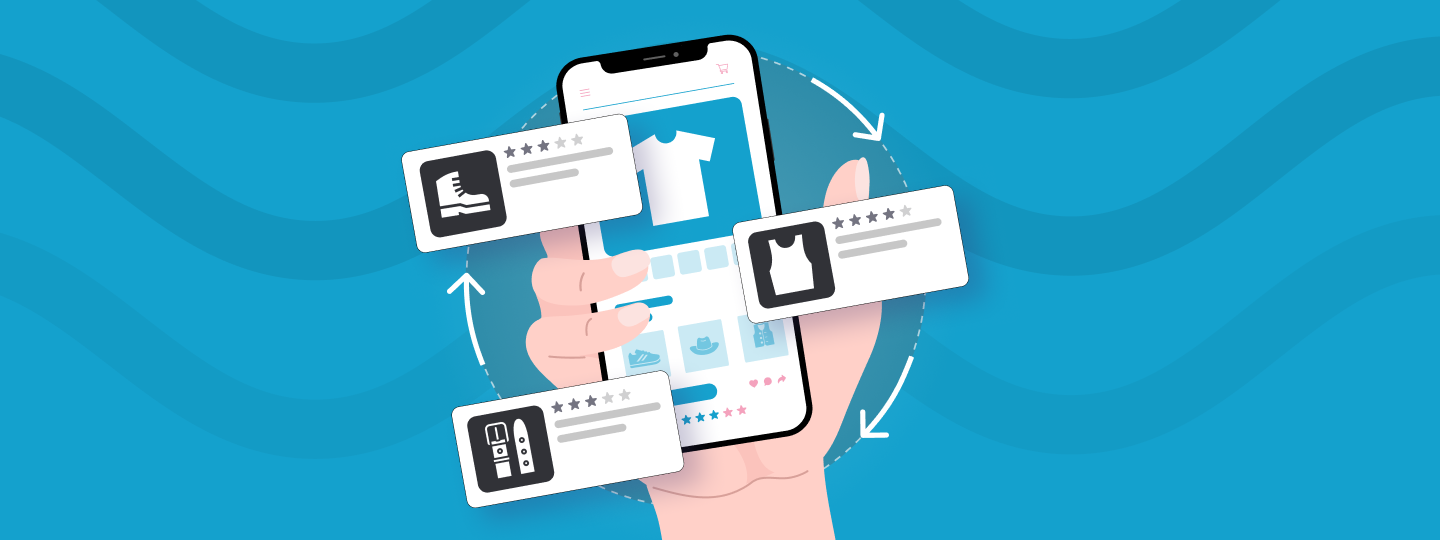
 Prakhya Nair
Prakhya Nair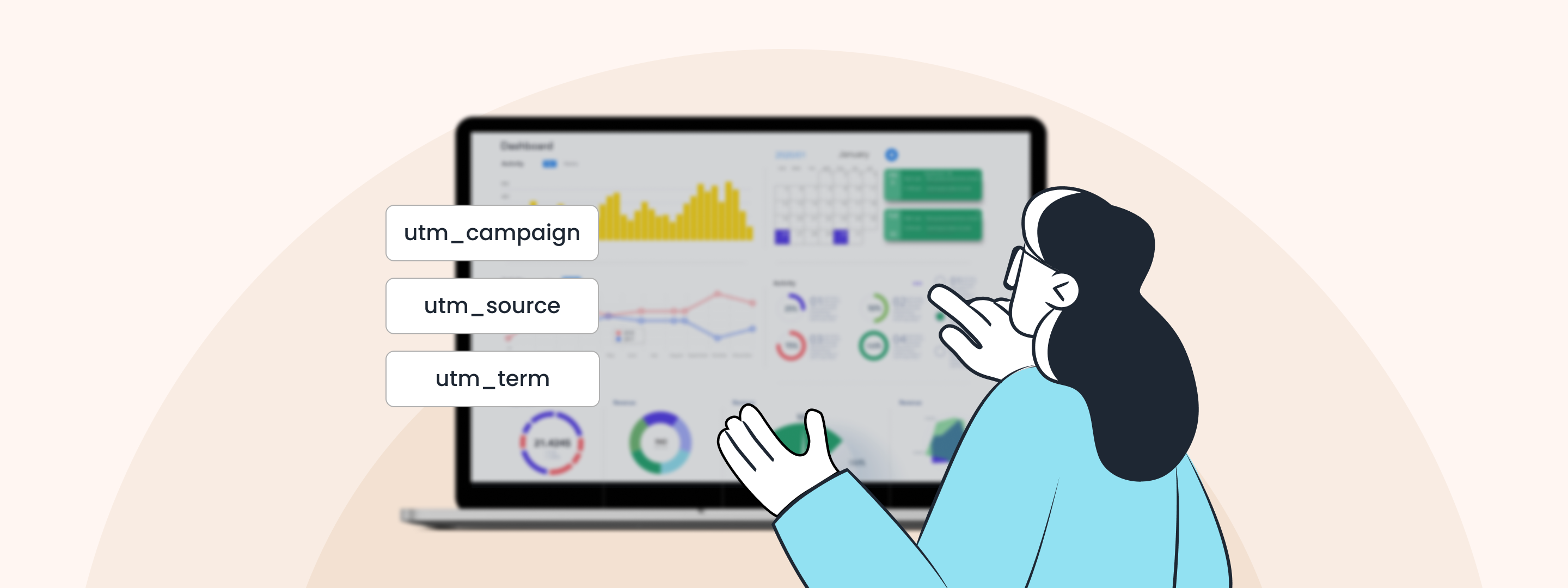
 Sanjay Mishra
Sanjay Mishra